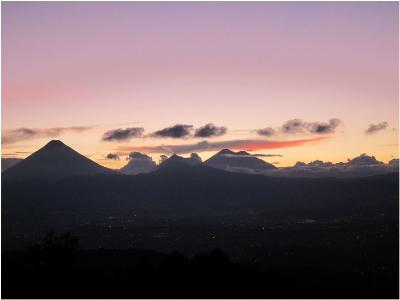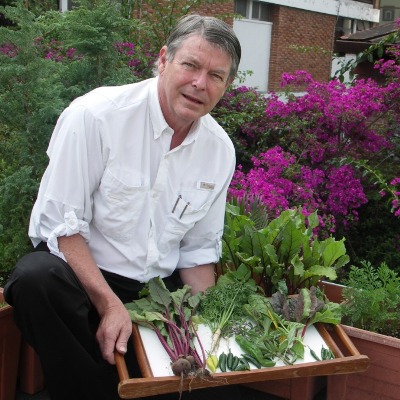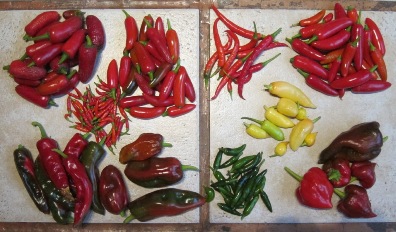Urban Agriculture: I Return Full Circle to my Urban Roots
By the early 70s I was an avid vegetable gardener. My interest began during high school in Southern California and then continued during university in Great Britain. The Brits are phenomenal gardeners and I learned a tremendous amount there—including during the period where I worked in a commercial greenhouse.
After university I moved to Seattle Washington where I continued my love of vegetable gardens, built a greenhouse to help winter over crops in the cold Seattle winters—and after a while I had filled every nook and cranny of my back and side yards with vegetables, fruit trees, and compost bins. I even made it onto the cover of Rodale’s Organic Gardening magazine.
In the late 70s I became the co-founder of an urban agricultural center in Seattle named the Tilth Urban Agricultural Center. It’s still going strong 35 years later and has a couple of new locations in the city. Every year about this time they have a big organic seedling sale—where organic farmers and gardeners bring seedlings for city dwellers to purchase and plant in their garden.
10 or 11 years ago when I moved to Guatemala City for work I had to exchange my lovely Seattle vegetable garden for a very small terrace on the 10th floor of an apartment building. However, I found that I could get flowerpots and grow a wide variety of things like tomatoes and spicy pepper plants which I thoroughly enjoyed. About three years ago we moved outside of the city to a house where I could have a proper garden—which I did. We raised herbs and flowers and root crops and traditional vegetables and salad crops.
But as Guatemala City has continued to grow the commute in to town simply became too much—so we moved back into the center of the City into a house in a very urban setting without a garden. I was notably disappointed. But before we moved I was able to give my most prized plants to my gardening friends—and we did one final harvest and were able to freeze a number of things.
It never occurred to me that I might be able to continue gardening in this new urban setting until one day when I needed to go up onto the roof with a contractor to look at some repairs. He had a tall ladder so we could reach the flat concrete roof above our two-story house.
| A View of the Volcanoes from the Rooftop Garden | |
 |
You can imagine my amazement when I realized what an asset this large flat expanse of concrete with full sun was—and that it had the added benefit of view of the four volcanoes south and west of Guatemala City—not to mention incredible sunsets.
Even when I had my rural garden I continued to raise things in my original flowerpots—and so with some help of the movers we carried all of my flowerpots (about 30) up to the roof. I then repaired an old, defunct water line that snaked its way across the roof and added a hose bib so that I have easy water access.
|
Two months ago, when we first moved into the house, I quickly planted some seeds from old seed packets that I had kept (unfortunately I had visited the United States in December—but not realizing that I had the opportunity for a vegetable garden I didn’t buy any seeds, and my seed source here in Guatemala dried up). The seeds were old enough that I got marginal germination, but now, two months later we have a couple of dozen flowerpots full of all sorts of different vegetables, tomatoes, and peppers.
I begged some lettuce seeds off of my friend Ricardo—and they germinated about two weeks ago—soon to be planted in the flowerpots. Read more about Ricardo: Income generation: $150 a month in vegetable sales.
Sunday I went up and inspected the plants carefully. I had a large number of aphids on my pepper plants—so I sprayed them with soapy water—but I also noticed that there were a few ladybugs feasting on the aphids—so I hope that the soap and the ladybugs take care of the problem.
| The First Harvest for Thinning Out the Seedlings | |
 |
I also began to realize that some of the root crops needed thinning—and that my Swiss chard needed to be split into two different planters because they were crowding each other out. I also discovered that my pepper plants have been hiding new peppers inside of their foliage—so I did a thinning harvest and cleaned up the beets and the carrots and the Swiss chard and picked a few small peppers and also three different kinds of basil.
In the photograph of me with the vegetables you can see two kinds of beets, two kinds of Swiss chard (including one called “rainbow” which has stalks in different colors) four different kinds of spicy peppers, three different kinds of basil (Guatemalan purple and green basil, and Thai basil), and some baby carrots. Behind me you can see an apartment building which is on the next lot—we are surrounded on three sides by buildings—fortunately the street side doesn’t have any obstructions and that is where the view of the sunset and the volcanoes is (two of which are active!). Next to me you can see a beet planter and a carrot planter next to it.
|
I discovered that my US library card allows me to download magazines and I have been enjoying reading a magazine called “Vegetarian Times” where I got the idea for the carrot tops (see below). Tonight were going to have a stir-fry using the beet greens and the Swiss chard that we picked thanks to a suggestion in “Vegetarian Times”.
So we had a wonderful salad (I didn’t realize this but you can use the carrot leaf tops (the leaves) cut up as a garnish for salads—as a replacement for things like parsley).
| Crops | |
 |
I just learned that a friend is coming down from the States in a week so I quickly mail ordered some fresh seeds so that I can see if I can increase my variety of vegetables and get my germination rate up. My friend Ricardo likes Swiss varieties of seed and I like English varieties, and I stumbled across several great seed companies which had everything that Ricardo and I were looking for.
|
| Evenings Watching Sunsets from our Rooftop Garden | |
 |
So we spend each evening upon the roof now surrounded by our baby vegetables, and watch the sunset. I began to realize how dangerous the rickety old ladder that we had borrowed was, and so I built a wooden staircase/ladder—the type that you would see in a sailboat. It’s perfect!
|
| Last Fall’s Harvest of Peppers grown in Planters | |
 |
Here are peppers that I picked from my flowerpots last fall—there are 10 different varieties in the photo ranging from fiercely spicy to sweet peppers for stuffing.
|
Would you like to learn more about gardening for nutrition?
Questions? Online.Learning@TimMagee.net
Would you like to subscribe to this newsletter?
The Center for Sustainable Development specializes in providing sound, evidence-based information, tools and training for humanitarian development professionals worldwide. CSDi is a 501(c)(3) nonprofit organization.
